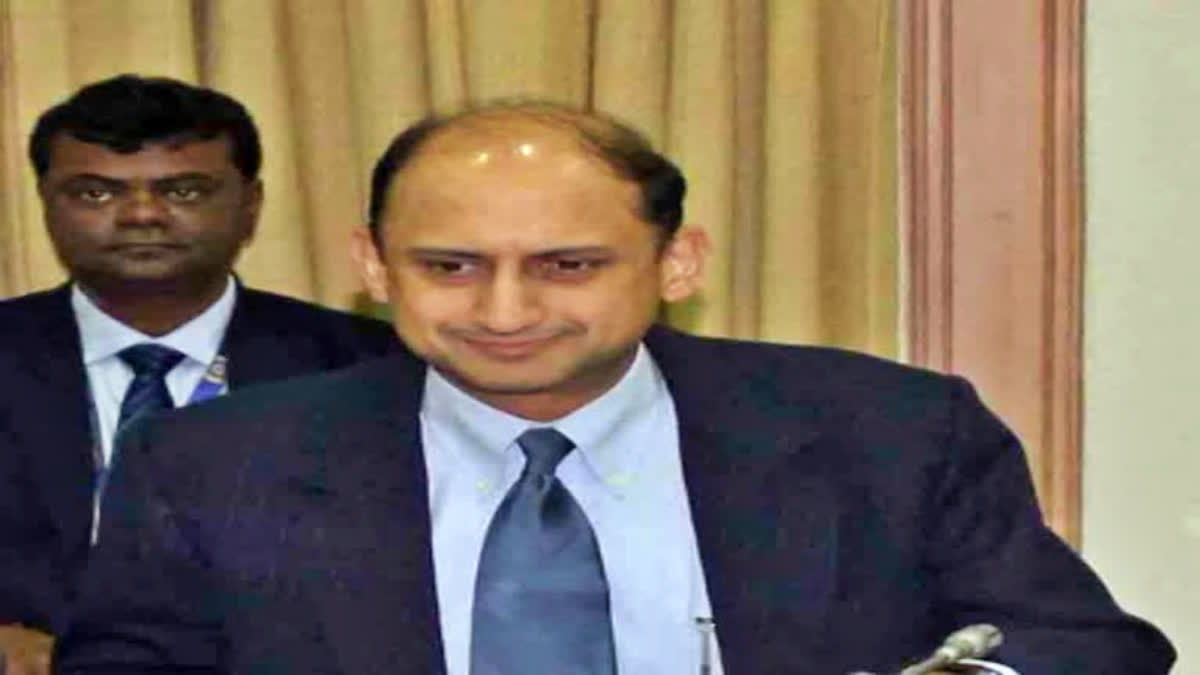New Delhi: Former RBI Deputy Governor Viral Acharya has called for dismantling India's largest conglomerates to increase competition and to reduce their pricing power. In a new paper for Brookings, Acharya of New York University said the Big Five are-Reliance (Mukesh Ambani Group), Tata Group, Aditya Birla Group, Adani Group and Bharti Telecom.
Acharya called for dismantling its competition-stifling industrial conglomerates through trust busting or at least reducing their market power through legal and regulatory changes that make it economically unattractive for them to remain large. Acharya said such growth of conglomerates raises several concerns, such as the risk of crony capitalism, i.e., political connections and inefficient project allocations, related party transactions within their byzantine corporate organization charts, over-leveraging due to an implicit too-big-to-fail perception, key-men/women (or key-family) risk in their operational efficiency, and a lack of creative destruction by crowding out of entrants.
It perhaps also explains why starting in 1991, decentralisation to state governments in India away from the central government grew with the deregulation of the economy. However, over the last decade, this has taken a reverse turn as the central government achieves national outcomes by working with the large conglomerates in part rather than with state governments, Acharya said.
Big-5 conglomerates are in over 40 NIC 2-digit sectors. Hence, one way out of their breadth of presence is the good old Theodore-Roosevelt or William-Howard-Taft style "trust buster" strategy of simply breaking up large industrial firms and their monopolies or oligopolies by regulatory fiat or via competition commission diktat, Acharya said.
This has been done repeatedly in the US when concentration of corporate power has risen nationally in a sector or across different product lines. One advantage of this approach is that it would require 23 various resulting sub-groups to have separate -- and likely more transparent -- balance sheets as well as ownership, management and governance structures.
Such "trust busting" may, however, be awkward for the current government given it has -- by revealed preference -- adopted an industrial policy favouring "national champions". An alternative route would be to throw sand in the wheels by making it economically unattractive to remain a large conglomerate unless productivity gains are truly large.
Big-5 have grown their market share over the past decade via increasing their footprint in M&As. It could be required that they own more equity of the companies they acquire, e.g., 80 per cent or higher as in the US in order to get benefits that group companies enjoy. These benefits typically include (i) tax exemption on dividends from subsidiaries to parents; (ii) consolidation of income between subsidiaries and parents for tax purposes (generally beneficial due to offsetting of losses against profits); and, (iii) tax-exemption on spinoff of subsidiary shares to parent shareholders.
Acharya said in essence, by increasing the extent of subsidiary ownership required for earning the benefits of being a conglomerate, some of the conglomerates may spin off existing subsidiaries where gains do not justify such an increase. Whether done surgically or gracefully, it would be better to make India more competition-friendly and less incumbent-, especially less conglomerate-, friendly.
A significant benefit would be that even if the sub-groups remain among the largest companies (Top-5) in their respective sectors, they may lack the pricing power commanded by Big-5. Acharya said in keeping with the rest of the results, lagged sales share of Big-5 groups in an industry feeds into its wholesale price inflation in a year, whereas the lagged share of Top-5 groups does not, with a 10 per cent rise in Big-5 share within an industry associated with a 2.7 percentage point higher WPI inflation next year.In summary, creating national champions, which is considered by many as the industrial policy of "new India", appears to be feeding directly into keeping prices at a high level, with the possibility that it is feeding "core" inflation's persistent high level.
Acharya said first, until 2010, the Big-5 increased their footprint in more and more industrial sectors, broadening their reach to 40 NIC-2-digit non-financial sectors.After this breadth first strategy came the depth-next strategy. Starting in 2015, the Big-5 started acquiring larger and larger share within the sectors where they were present.
In particular, their share in total assets of the non-financial sectors rose from 10 per cent in 1991 to nearly 18 per cent in 2021, whereas the share of the next big five (Big 6-10) business groups fell from 18 per cent in 1992 to less than 9 per cent. In other words, the Big-5 grew not just at the expense of the smallest firms, but also of the next largest firms.
It is possible that some of this growth in share of the Big-5 is due to their ability to acquire relatively large defaulted companies that were filed to the IBC following the Reserve Bank initiated clean-up of the banking sector in 2017-18. However, the growth in share of the Big-5 started earlier in 2015 and not in 2018 when the first IBC cases started being resolved. Next, this growth of Big-5 appears to be driven in part by their growing share of overall Mergers & Acquisitions (M&A) activity.
Arguably, this growth has also been supported by a conscious industrial policy of creating "national champions" via preferential allocation of projects and in some cases regulatory agencies turning a blind eye to predatory pricing.The rising share of M&A activity is limited to Big-5 and not to the next five large groups (Big 6-10).
Even though the aggregate number of M&A deals has dropped since 2011, the share of M&A deals by the Big-5 has doubled from under 3 per cent in 2015 to 6 per cent in 2021, without such an increase being seen in the next five biggest groups. Importantly, given the high tariffs, Big-5 groups do not have to compete with international peers in many sectors where they are present and derive most of their revenues domestically, Acharya said. (IANS)



